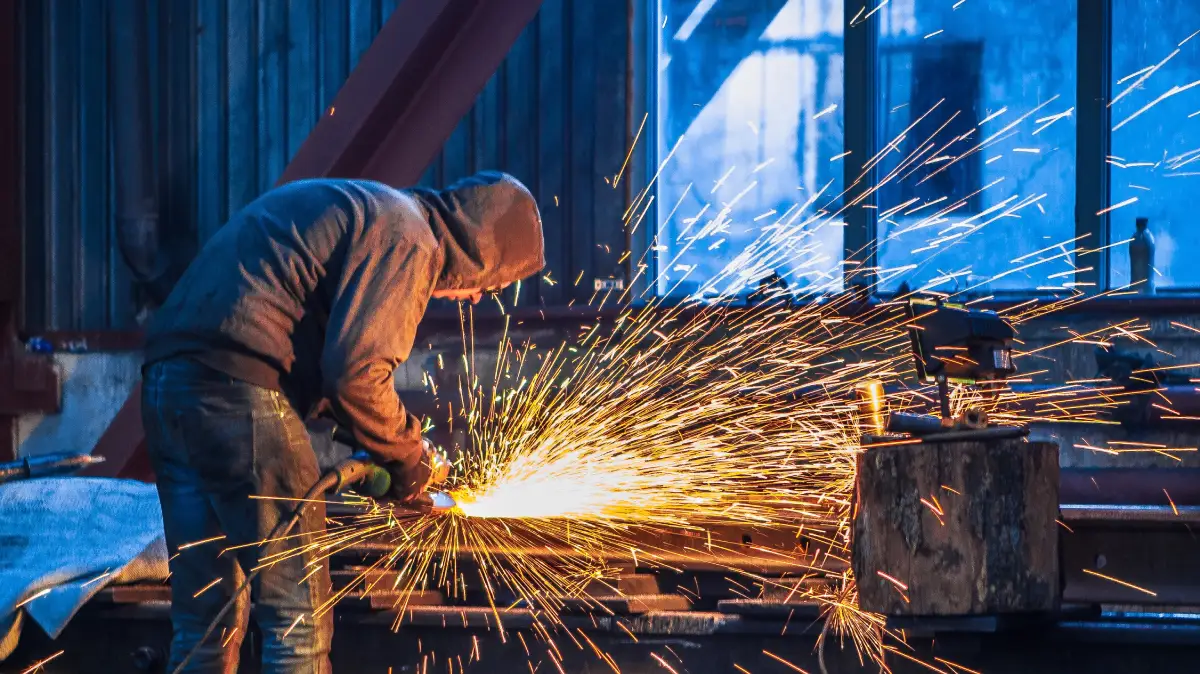Blog
- Home
- News & Article
- What is Steel Fabrication? Process & Application
What is Steel Fabrication? Process & Application

Steel fabrication is a crucial process in various industries, encompassing the creation of metal structures by cutting, bending, and assembling steel materials. This article delves into the intricacies of steel fabrication, exploring its types, processes, applications, advantages, challenges, and future trends.
Introduction to Steel Fabrication
Steel fabrication refers to the process of transforming raw steel materials into predefined shapes and sizes to construct various structures and components. It plays a fundamental role in industries such as construction, manufacturing, and engineering. Steel fabrication is indispensable in creating structures with precise specifications and dimensions, ensuring durability and reliability.
Types of Steel Fabrication
Structural Steel Fabrication
Structural steel fabrication involves the manufacturing of structural components used in buildings, bridges, and other large-scale infrastructure projects. These components include beams, columns, and trusses, which provide support and stability to the overall structure.
Heavy Steel Fabrication
Heavy steel fabrication deals with the production of robust and large-scale equipment and machinery components. Industries such as mining, oil and gas, and shipbuilding rely on heavy steel fabrication for the construction of heavy-duty machinery and equipment.
Light Steel Fabrication
Light steel fabrication focuses on the manufacturing of lightweight structures and components commonly used in industries such as automotive, aerospace, and electronics. It involves precision cutting and welding of thin steel sheets to create intricate designs and shapes.
Processes Involved in Steel Fabrication
Steel fabrication encompasses several processes, each serving a specific purpose in shaping and assembling steel materials.
Cutting
Cutting is the initial step in steel fabrication, where steel plates or bars are cut into desired shapes and sizes using various cutting methods such as sawing, shearing, or plasma cutting.
Welding
Welding is a crucial process in steel fabrication, where two or more steel components are joined together using heat and pressure. Common welding techniques include arc welding, MIG welding, and TIG welding, ensuring strong and durable connections.
Forming
Forming involves shaping steel materials into desired configurations through processes such as bending, rolling, and stamping. This allows fabricators to create complex shapes and designs according to specific project requirements.
Machining
Machining entails the precision machining of steel components to achieve tight tolerances and surface finishes. CNC machining technologies enable fabricators to drill, mill, and lathe steel materials with high accuracy and efficiency.
Applications of Steel Fabrication
Steel fabrication finds extensive applications across various industries due to its versatility, strength, and durability.
Construction Industry
In the construction industry, steel fabrication is used to create structural frameworks, beams, and reinforcements for buildings, bridges, and infrastructure projects. Steel structures offer superior strength-to-weight ratios, making them ideal for high-rise buildings and long-span structures.
Automotive Industry
The automotive industry utilizes steel fabrication to manufacture vehicle chassis, frames, and body panels. Steel’s high strength and impact resistance enhance vehicle safety and performance, ensuring passenger protection and structural integrity.
Aerospace Industry
In the aerospace industry, steel fabrication is employed in the production of aircraft components such as fuselage, wings, and landing gear. Aerospace-grade steel alloys offer exceptional strength-to-weight ratios and resistance to high temperatures and corrosion, meeting stringent aerospace standards.
Machinery and Equipment
Steel fabrication plays a crucial role in the manufacturing of machinery and equipment for various industrial applications. From agricultural machinery to mining equipment, steel components provide the durability and reliability required for heavy-duty operations.
Advantages of Steel Fabrication
Steel fabrication offers numerous advantages over other materials, making it a preferred choice in many industries.
Strength and Durability
Steel exhibits exceptional strength and durability, capable of withstanding heavy loads, harsh environments, and extreme weather conditions. It ensures the long-term structural integrity and reliability of fabricated components and structures.
Customization
Steel fabrication allows for customization and flexibility in design, enabling fabricators to create tailored solutions for specific applications. Whether it’s intricate architectural designs or precision-engineered machinery parts, steel fabrication offers versatility and adaptability to meet diverse requirements.
Cost-effectiveness
Despite its superior properties, steel fabrication remains cost-effective compared to alternative materials such as aluminium or titanium. The abundance of steel resources, coupled with efficient fabrication processes, makes steel an economically viable choice for various industrial applications.
Challenges in Steel Fabrication
Despite its widespread use and advantages, steel fabrication presents certain challenges that fabricators must address to ensure quality and efficiency.
Material Selection
Choosing the right steel alloy for specific applications is crucial to achieving the desired performance and durability. Fabricators must consider factors such as strength, corrosion resistance, and machinability when selecting steel materials for fabrication projects.
Quality Control
Maintaining strict quality control measures throughout the fabrication process is essential to prevent defects and ensure the reliability of fabricated components. Fabricators must adhere to industry standards and specifications to meet customer requirements and regulatory compliance.
Environmental Impact
Steel fabrication processes, such as welding and machining, may generate environmental pollutants and emissions if not properly managed. Fabricators must implement sustainable practices and adopt eco-friendly technologies to minimize environmental impact and promote resource conservation.
Future Trends in Steel Fabrication
The future of steel fabrication is driven by technological advancements and evolving industry trends aimed at enhancing efficiency, sustainability, and innovation.
Automation and Robotics
Automation and robotics are revolutionizing the steel fabrication industry, enabling fabricators to automate repetitive tasks and streamline production processes. Robotic welding, cutting, and material handling systems improve precision, productivity, and safety in steel fabrication facilities.
Sustainable Practices
Sustainable practices such as recycling, energy efficiency, and waste reduction are gaining prominence in the steel fabrication industry. Fabricators are increasingly adopting eco-friendly materials, processes, and technologies to minimize carbon footprint and promote environmental stewardship.
Steel fabrication plays a pivotal role in various industries, offering versatile solutions for constructing structures, manufacturing equipment, and creating innovative designs. With advancements in technology and sustainable practices, the future of steel fabrication holds promising opportunities for enhanced efficiency, quality, and environmental responsibility.
Latest News & Post

- 05 September
- 0 Comments

- 17 November
- 0 Comments

- 06 November
- 0 Comments

- 28 October
- 0 Comments

